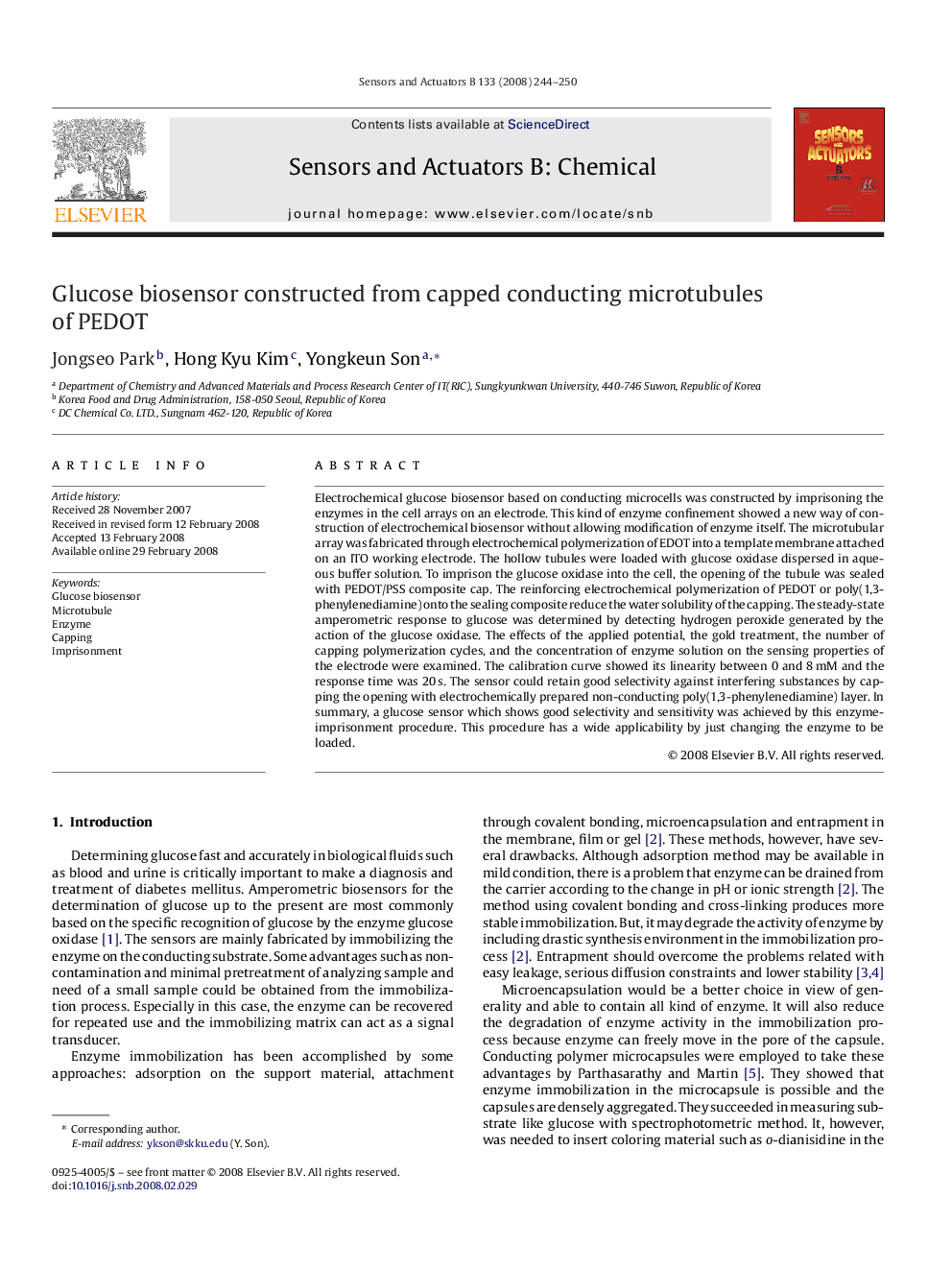| Article ID | Journal | Published Year | Pages | File Type |
|---|---|---|---|---|
| 743737 | Sensors and Actuators B: Chemical | 2008 | 7 Pages |
Electrochemical glucose biosensor based on conducting microcells was constructed by imprisoning the enzymes in the cell arrays on an electrode. This kind of enzyme confinement showed a new way of construction of electrochemical biosensor without allowing modification of enzyme itself. The microtubular array was fabricated through electrochemical polymerization of EDOT into a template membrane attached on an ITO working electrode. The hollow tubules were loaded with glucose oxidase dispersed in aqueous buffer solution. To imprison the glucose oxidase into the cell, the opening of the tubule was sealed with PEDOT/PSS composite cap. The reinforcing electrochemical polymerization of PEDOT or poly(1,3-phenylenediamine) onto the sealing composite reduce the water solubility of the capping. The steady-state amperometric response to glucose was determined by detecting hydrogen peroxide generated by the action of the glucose oxidase. The effects of the applied potential, the gold treatment, the number of capping polymerization cycles, and the concentration of enzyme solution on the sensing properties of the electrode were examined. The calibration curve showed its linearity between 0 and 8 mM and the response time was 20 s. The sensor could retain good selectivity against interfering substances by capping the opening with electrochemically prepared non-conducting poly(1,3-phenylenediamine) layer. In summary, a glucose sensor which shows good selectivity and sensitivity was achieved by this enzyme-imprisonment procedure. This procedure has a wide applicability by just changing the enzyme to be loaded.
